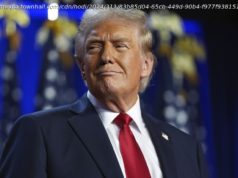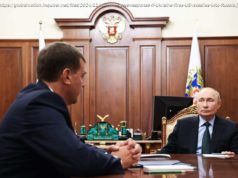Despite its many critics, the Trump-Kim summit paves the way to peace on the Korean peninsula by avoiding the pitfalls of deadlines and demands – the diplomats will work all that out later
The great tragedy of the “limited war” on the Korean peninsula that snuffed out 2 million civilian lives in the early 1950s was that it ultimately resolved very little: the status quo was restored, and a tenuous armistice held the peace thereafter.
That is until earlier this week.
On June 12 in Singapore, US President Donald Trump and Chairman Kim Jong-un paved a pathway which, if faithfully trod upon, will durably close this painful chapter in Asia’s modern history and set the peninsula on a qualitatively more hopeful trajectory.
The comprehensive and broad principles enunciated in the Trump-Kim joint statement constitute a first step towards reconciliation in the decades-long history of stand-off and antagonism since the de facto political division of the peninsula in the mid-1940s.
The outlines of the grand bargain are familiar, symmetric and unprecedented. In exchange for committing to “complete denuclearisation” of the peninsula on a condensed but step-by-step basis, Pyongyang is to receive the security guarantees it craves. Down the line, as reciprocal commitments are progressively fulfilled and a structure of peace elaborately constructed (including “an appropriate agreement for a peaceful settlement [of the Korean war] at a political level”), Pyongyang is to enjoy sanctions relief and the normalisation of relations with the US.
The grand bargain constitutes the first time that a North Korean leader has, face-to-face, promised an incumbent US president to work towards the complete denuclearisation of the peninsula. Equally, the US commitment to guarantee the security of North Korea by means of a legally binding instrument is epochal – the joint statement of the six-party talks of September 2005 had merely affirmed that Washington had “no intention to attack or invade the DPRK” and it was left at that.
As an early harvest down payment, Washington is to suspend joint military exercises with Seoul for the duration of the negotiations. This is not an exceptional giveaway. In 1992, the Bush Administration suspended the Team Spirit exercises, which led to North Korea’s signing of its safeguards agreement with the International Atomic Energy Agency (IAEA). Further suspensions in 1994,1995 and 1996 allowed the initialling and early phase implementation of the US-DPRK Agreed Framework agreement. For its part, Pyongyang is to facilitate the retrieval and repatriation of the remains of American POW/MIA, maintain its nuclear and ballistic missile research and testing freezes, and demolish the large-scale facility in Tongchang-ri where it had conducted combustion tests for the engine that powered its Hwasong-14 intercontinental ballistic missile (ICBM) across the Pacific Ocean last year. The demolition follows in the wake of its flattening of the nuclear testing site at Punggye-ri last month.
Neither party came away from Singapore entirely fulfilled – especially the US side. The joint statement neither refers to “verifiable (referenced in the September 2005 statement) and irreversible” denuclearisation nor formally mentions a “verifiable and irreversible” guarantee to the Kim regime.
Critics miss the point, however, when they argue that the summit laundered Kim Jong-un’s public image but failed to deliver a common definition of “denuclearisation” or a detailed pathway to getting there. That the joint statement fails to elaborate upon a mechanism for public review of the verification provisions – a staple feature of past arms control or disarmament agreements going back to the latter cold war days – is also not an insurmountable barrier.
To the contrary, the overarching principles and non-prescriptive nature of the joint statement affords lead negotiators on both sides the political space to frame the mechanics of denuclearisation flexibly. It was precisely the detailed multiphase implementation schedule, strung along to the principle of “commitment for commitment, action for action”, which ingloriously sank the six-party talks process a decade earlier. And, at the end of the day, when the Kim regime’s security assurances are to be legally guaranteed, 66 US senators will at minimum enjoy the luxury of parsing through the verification mechanisms with a fine-tooth comb.
Going forward, defanging North Korea’s strategic capabilities can proceed on a number of lines. With Pyongyang’s nuclear and ICBM missile-engine testing site already or soon-to-be disembowelled, the logical next target for is its fissile and long-range ballistic missile production capability, followed thereafter by a disabling of its deployed, stockpiled and latent nuclear capability. Crucially, the sooner a threshold point of disablement of this strategic capability is achieved, the faster the material relief promised to Pyongyang can flow.
To be sure, the race to reach this irreversible threshold (with a mandatory assist from Pyongyang) need not be a drawn-out affair. As pointed out by US Secretary of State Mike Pompeo, a US inter-agency group with more than 100 experts has been meeting regularly over the past three months to address technical and logistical issues related to the disablement of North Korea’s weapons programme. In short order, these experts, along with the IAEA, could begin their activities on North Korean soil. The hard bargaining ahead that Trump referred to in his press conference prior to departure probably pertains to the technical experts’ terms of access to facilities north of the 38th parallel that will need to be hashed out with Pyongyang.
The vision, and sparseness, of the Trump-Kim joint statement provides an eminently well-crafted basis for future action. Indeed, the beauty of this flexibly interpretable statement lives in the actuality that none of its material gains that are to accrue to Pyongyang can flow – sanctions relief and international integration, the disposition of US forces on the peninsula or the ending of the technical state of war – until a threshold point of disablement of North Korea’s nuclear capability is crossed.
Kim remains the master of his own destiny (as has been the case since his farsighted New Year’s Day address) and he, himself, holds the key to unlocking it further for the better.






